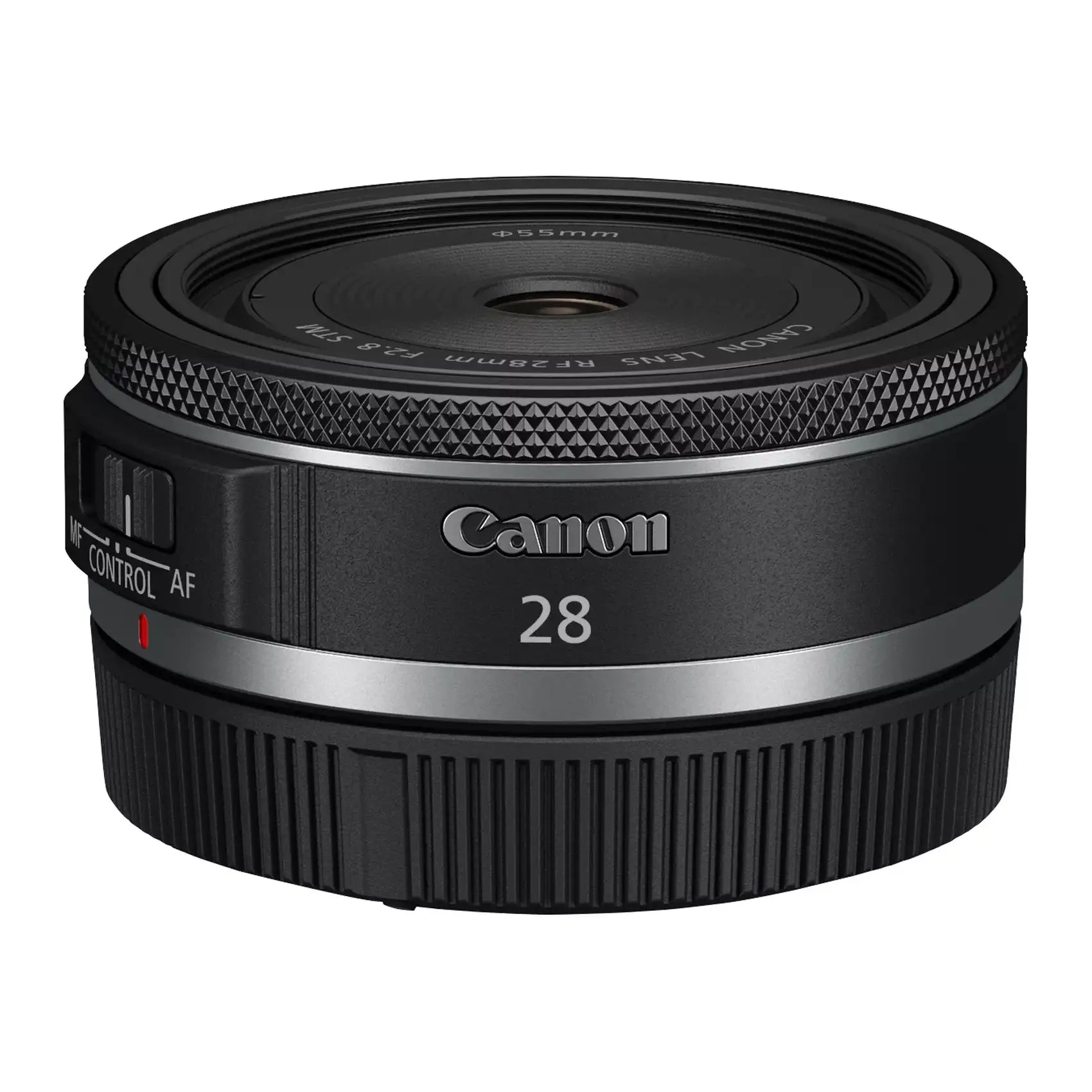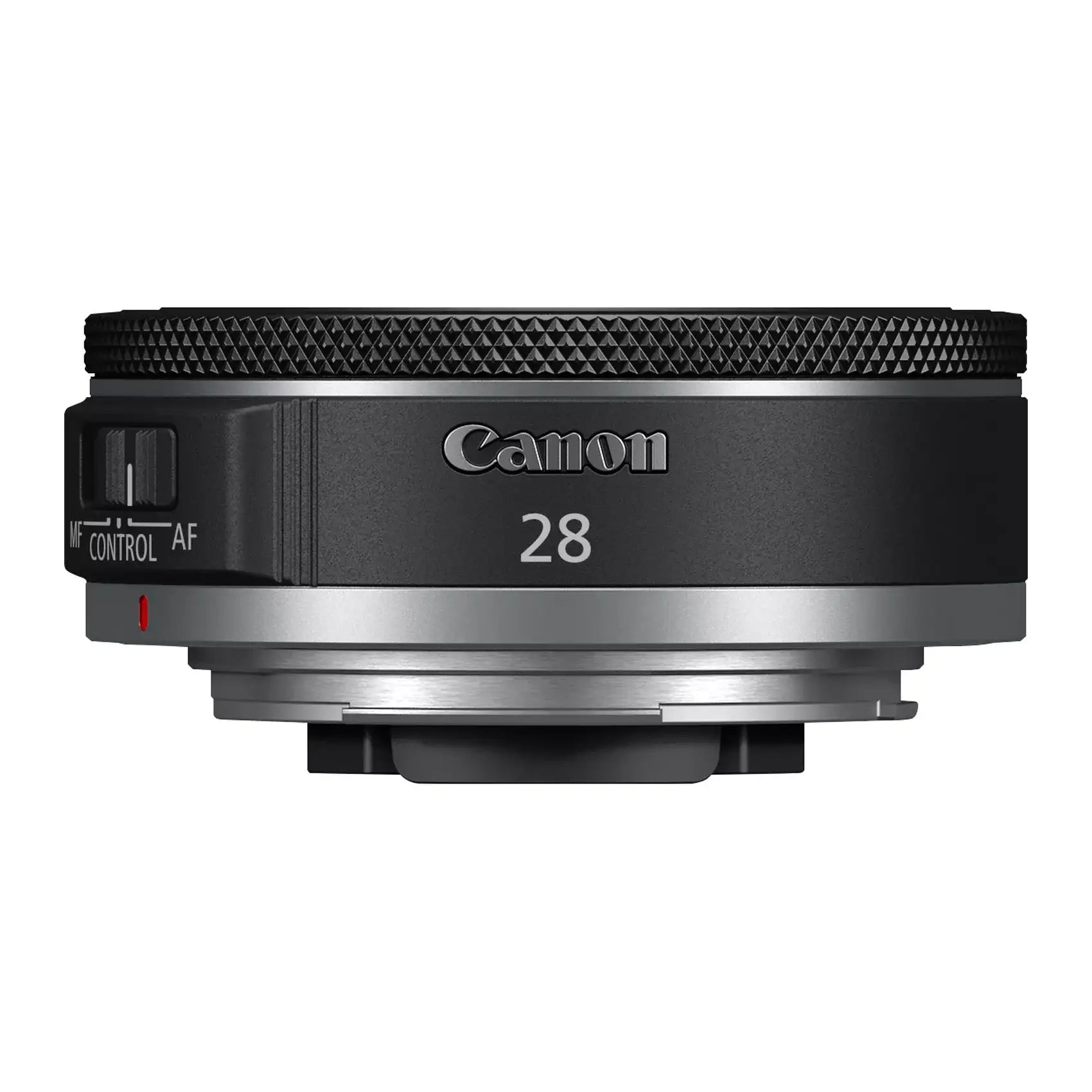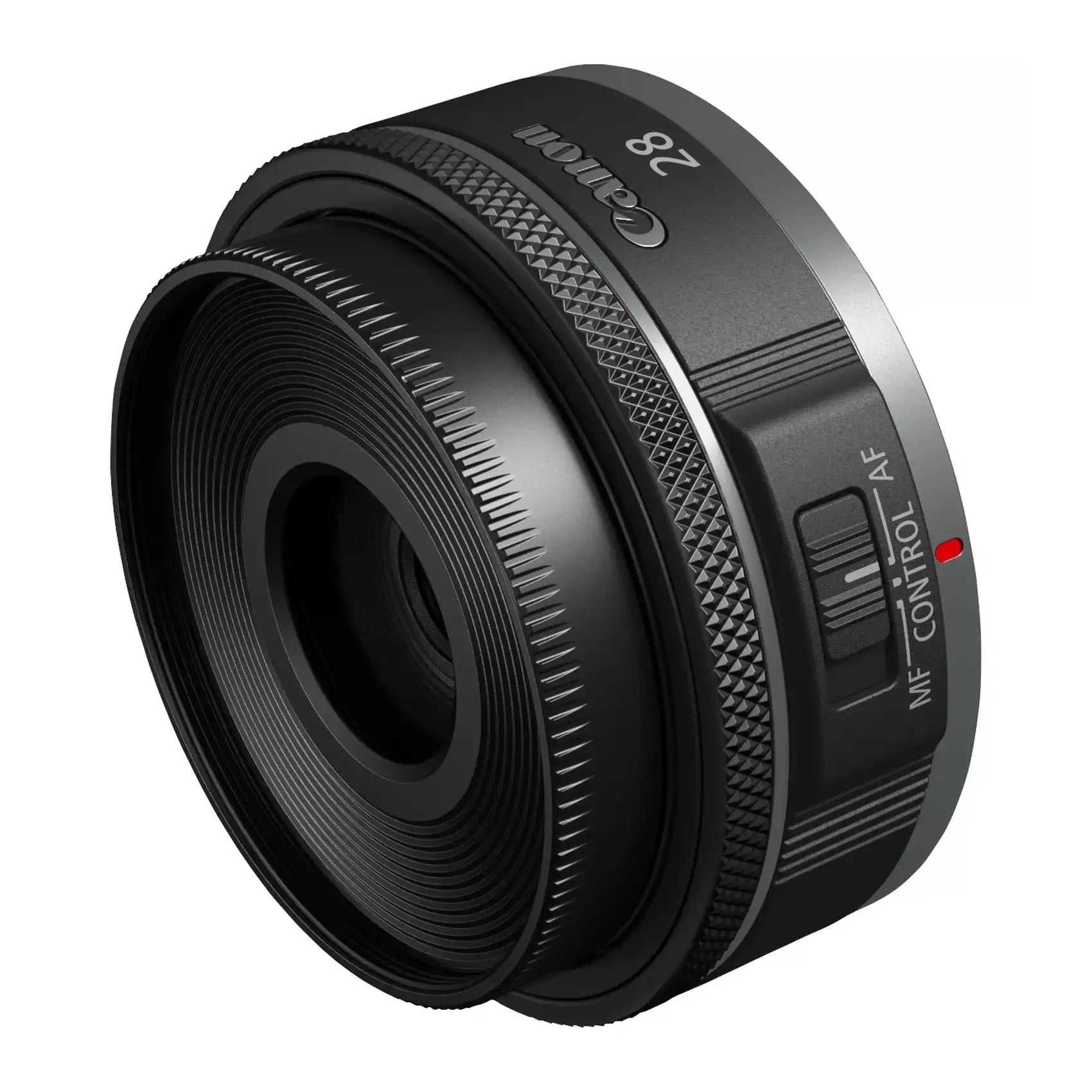What we think...
Product Description

Canon RF 28mm f2.8 STM Lens
Introducing the Canon RF 28mm f/2.8 STM Lens, a compact, lightweight, and highly versatile wide-angle prime lens designed for full-frame Canon RF-mount cameras. This pancake-style lens is the perfect companion for photographers and videographers who value portability without sacrificing performance. Whether you're capturing dynamic street scenes, stunning landscapes, or shooting video, this lens delivers exceptional image quality at an affordable price point.

Why the Canon RF 28mm f/2.8 STM Should Be Your Go-To Lens
-
Ultra-Compact and Lightweight
- Weighing in as one of the lightest RF lenses, the Canon RF 28mm f/2.8 STM is designed for maximum portability. Its slim pancake-style profile ensures it fits easily into any camera bag or even your pocket, making it the perfect travel companion or everyday carry lens. Never miss a shot with a lens that's always ready to go.
-
Versatile Wide-Angle Field of View
- The 28mm focal length is ideal for a variety of shooting scenarios, from wide landscapes to street photography. It provides a natural perspective that enhances both stills and video work. When paired with APS-C format cameras, the lens offers an effective focal length of approximately 45mm, making it versatile for different types of shots.
-
Bright f/2.8 Aperture
- The f/2.8 maximum aperture allows for excellent performance in low-light situations, giving you the ability to shoot in available light without needing a flash. Plus, this bright aperture helps achieve beautiful background separation and depth of field control, perfect for creative bokeh effects.
-
Advanced Optical Design for Sharp, Clear Images
- This lens is equipped with three aspherical elements that help reduce distortion and enhance sharpness across the image frame. Canon's Super Spectra Coating further enhances contrast and color fidelity by reducing lens flare and ghosting, especially when shooting in bright or backlit conditions. Every shot will be crisp and true to life.
-
STM Stepping Motor for Smooth, Quiet Autofocus
- The STM (Stepping Motor) technology delivers fast, smooth, and near-silent autofocus performance, making it an ideal choice for both still photography and video recording. Whether you're capturing fast action or smooth focus pulls during video shoots, the autofocus system is responsive and precise.
-
Get Up Close with a 9.1-inch Focusing Distance
- With a minimum focusing distance of just 9.1 inches and a maximum magnification of 0.17x, the Canon RF 28mm f/2.8 STM excels at close-up photography. Whether you're capturing fine details in a flower or shooting portraits, this lens offers flexibility with outstanding depth of field control.
-
Customizable Control Ring for Seamless Adjustments
- The lens features a Configurable Control Ring, allowing you to adjust essential settings such as aperture, ISO, or exposure compensation directly from the lens without interrupting your workflow. This intuitive feature gives you greater creative control and quick access to settings while shooting.
-
Full-Time Manual Focus and AF/MF Switch
- Benefit from full-time manual focus override even when in autofocus mode, giving you complete control for precise adjustments. The AF/MF switch on the lens body ensures easy toggling between auto and manual focus modes, enhancing your flexibility during shoots.
-
Beautiful Bokeh with a 7-Blade Diaphragm
- Achieve smooth, creamy background blur thanks to the rounded 7-blade diaphragm, perfect for creating eye-catching portraits and macro shots with beautifully soft bokeh.
-
Optional Lens Hood for Filter Adjustments
- The separately available EW-55 threaded lens hood is designed to minimize flare and protect the front element. It also includes a filter window, allowing for easy adjustment of rotating filters like polarizers, ensuring you get the shot exactly the way you envision.

Key Features:
- Full-Frame Coverage: Designed for Canon RF-mount full-frame mirrorless cameras
- Bright Aperture: f/2.8 to f/22 for low-light performance and depth of field control
- STM Autofocus Motor: Fast, quiet, and smooth AF, ideal for both video and stills
- Optics: Three aspherical elements and Super Spectra Coating for minimized distortion and flare
- Control Ring: Customizable for aperture, ISO, or exposure compensation adjustments
- Close-Up Capability: Minimum focus distance of 9.1 inches for detailed macro shots
- Seven-Blade Diaphragm: Provides pleasing, natural bokeh
- Lightweight and Portable: Perfect for everyday use and travel photography

Elevate your photography and video projects with the Canon RF 28mm f/2.8 STM, a highly capable wide-angle prime that delivers professional-grade performance in a compact, affordable package. Whether you're a seasoned photographer or a content creator just starting out, this lens is designed to enhance your creative potential.
Sample Photos



Try The Kit - Canon Test Drive

Canon Test Drive – Try Before You Buy with Free Next Day Delivery
Test selected Canon gear with a 48-hour free trial or hire for up to 7 days at a low cost. Book anytime via the 24/7 live system.
How it works:
-
Book your kit – Choose dates and reserve online.
-
Pay a refundable deposit – Fully refunded upon safe return.
-
Fast delivery – Get your gear quickly and securely.
-
Easy returns – Use pre-paid packaging for simple drop-off or collection.
Visit https://testdrive.trythekit.com to book yours now.
Payment & Security
Your payment information is processed securely. We do not store credit card details nor have access to your credit card information.





















